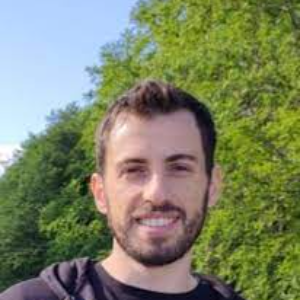Title : Metalenses: A framework for designing and fabricating metalenses
Abstract:
The subject of the presentation are Metalens. Metalens are flat metamaterials that replicate the optical functions of traditional lens. While traditional lens achieves focusing by refraction, metalens achieve focusing by diffraction. They are consisted of a surface that is precisely designed and fabricated. The specific pattern on the surface modulates the light by applying phase on the propagating radiation and achieves focusing by constructive interference.
The presentation will start with a quick introduction of metalens and a comparison of traditional lens and metalens, discussing their advantages and disadvantages. While traditional optics offer high quality imaging, they are heavy, bulky and expensive. On the other hand, flat metalens are light, easy to manufacture since they are compatible with already existing photolithographic techniques. For example, low cost and flat Silicon lens can replace the expensive Germanium lens. Even though Si has a higher absorption coefficient, its reduced thickness compensates for that. On the other hand, chromatic aberrations are quite dominant in flat optics. In addition, a wide operating is hard to achieve without compromising efficiency.
Then, the framework of designing and fabrication will be explained. Given a specific lens with a specific phase profile and the operating wavelength, a set of simulations of individual building blocks of the metamaterial, Meta-Atoms, must be completed to extract their effect on the propagating radiation. Finally, one needs to place the meta-atoms in the correct location on the surface and write the designing file that is readable from the photolithographic equipment, and in most cases, this is a GDSII format file. The creation of the GDSII file must be automated since it involves the placement of thousands of meta-atoms.
The presentation will close with the possible application of metalenses, ranging from sensors, imaging equipment, infrared vision and military gear. Ongoing research will be presented.
Our focus of work is infrared optical systems and most of the presenting material will be related to IR imaging.
Audience Take Away:
- Explain how the audience will be able to use what they learn?
It will provide a full guideline on how to design and fabricate metalens. Researchers that look to start researching this topic will be benefited by greatly reducing the time needed for background research. It will introduce researchers to the new topic of metalens for imaging and sensors introduce the audience to possible applications for metalens. - How will this help the audience in their job? Is this research that other faculty could use to expand their research or teaching? Does this provide a practical solution to a problem that could simplify or make a designer’s job more efficient? Will it improve the accuracy of a design, or provide new information to assist in a design problem? List all other benefits.
Will provide help with the designing process of metalens and its automation for the final GDSII file Will provide framework for Finite-difference frequency-domain method meta-atom simulation.


